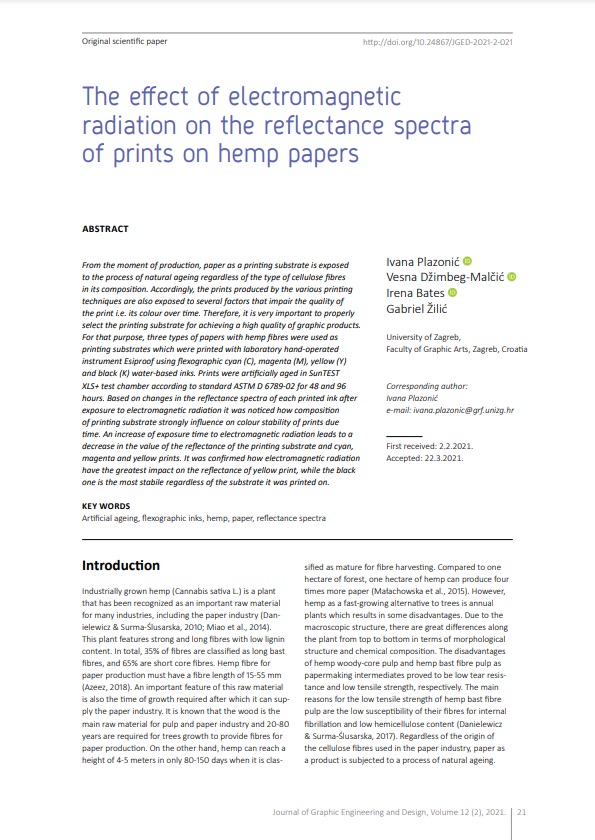The effect of electromagnetic radiation on the reflectance spectra of prints on hemp papers

Published 2021-06-01
abstract views: 28 // Full text article (PDF): 35
Keywords
- Artificial ageing,
- flexographic inks,
- hemp,
- paper,
- reflectance spectra
How to Cite
Copyright (c) 2021 © 2021 Authors. Published by the University of Novi Sad, Faculty of Technical Sciences, Department of Graphic Engineering and Design. This article is an open access article distributed under the terms and conditions of the Creative Commons Attribution license 3.0 Serbia.

This work is licensed under a Creative Commons Attribution 3.0 Unported License.
Abstract
From the moment of production, paper as a printing substrate is exposed to the process of natural ageing regardless of the type of cellulose fibres in its composition. Accordingly, the prints produced by the various printing techniques are also exposed to several factors that impair the quality of the print i.e. its colour over time. Therefore, it is very important to properly select the printing substrate for achieving a high quality of graphic products. For that purpose, three types of papers with hemp fibres were used as printing substrates which were printed with laboratory hand-operated instrument Esiproof using flexographic cyan (C), magenta (M), yellow (Y) and black (K) water-based inks. Prints were artificially aged in SunTEST XLS+ test chamber according to standard ASTM D 6789-02 for 48 and 96 hours. Based on changes in the reflectance spectra of each printed ink after exposure to electromagnetic radiation it was noticed how composition of printing substrate strongly influence on colour stability of prints due time. An increase of exposure time to electromagnetic radiation leads to a decrease in the value of the reflectance of the printing substrate and cyan, magenta and yellow prints. It was confirmed how electromagnetic radiation have the greatest impact on the reflectance of yellow print, while the black one is the most stabile regardless of the substrate it was printed on.
Article history: Received (February 2, 2021); Revised (February 24, 2021); Accepted (March 22, 2021); Published online (June 1, 2021)

